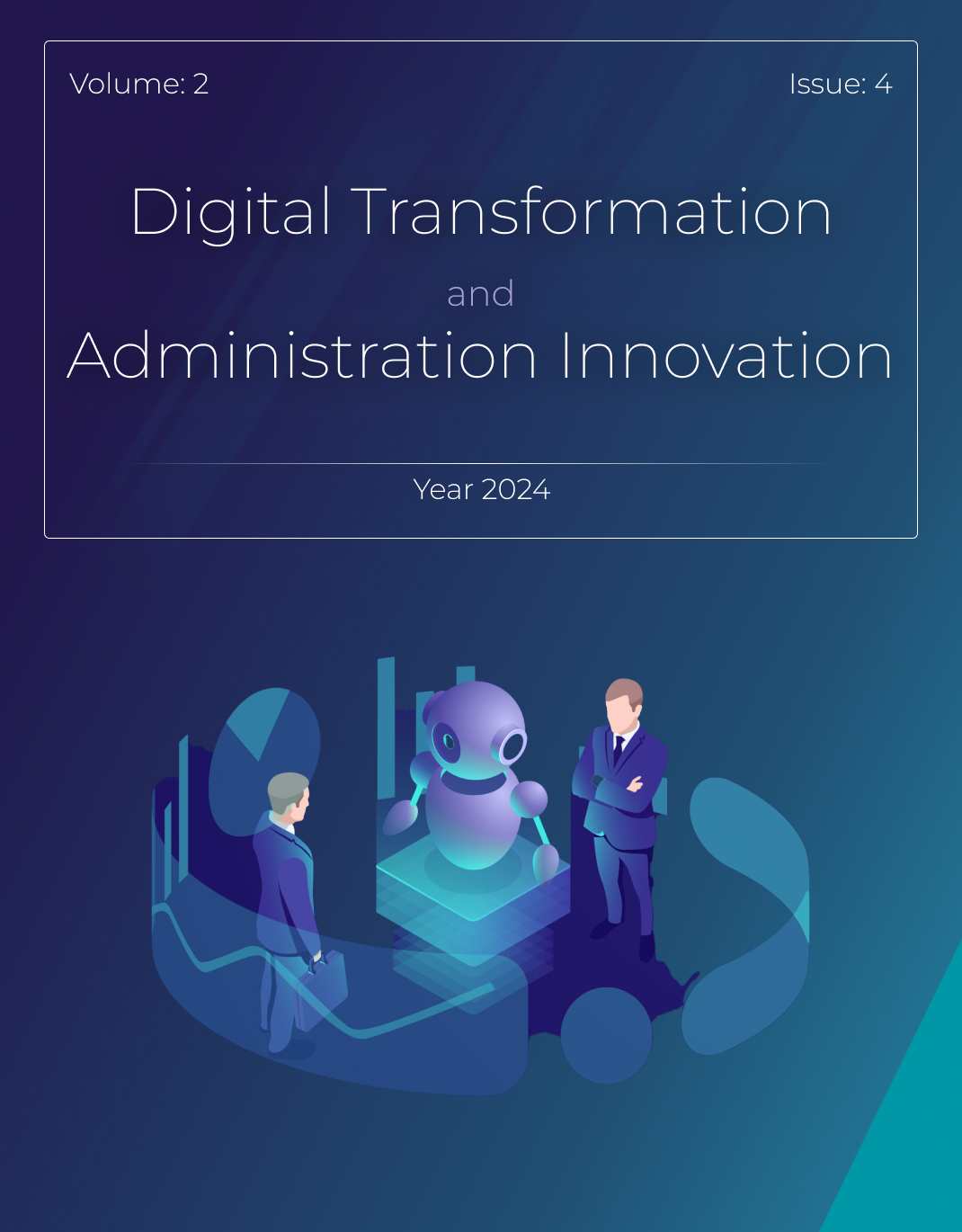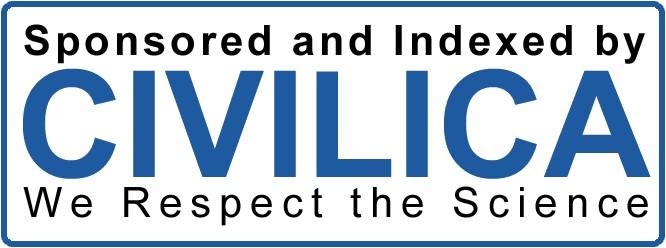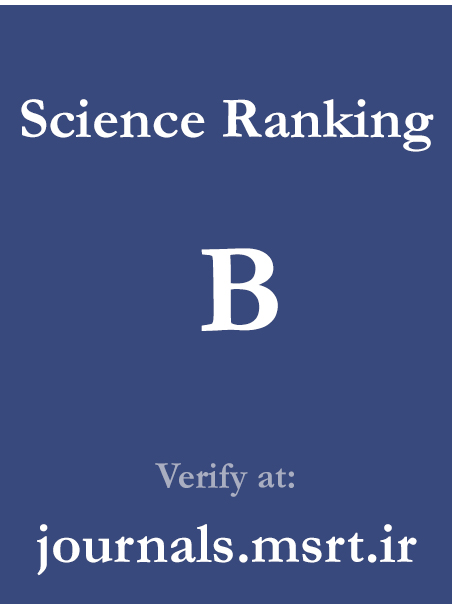Structural–Interpretive Model of Customer Confusion Management Based on the Internet of Things in the Banking Industry
Keywords:
Customer Confusion, Internet of Things , Banking Industry, Thematic Analysis, Interpretive Structural ModelingAbstract
The present study was conducted with the aim of developing a structural–interpretive model (ISM) for customer confusion management based on the Internet of Things (IoT) in the banking industry. This research is applied in nature and qualitative in approach, employing thematic analysis and the structural–interpretive modeling method to explain the relationships among the factors influencing customer confusion management. The statistical population consisted of 17 managers and experts from Bank Mellat branches in Tehran, who were selected through purposive and snowball sampling methods. Data were collected using semi-structured interviews and analyzed with MAXQDA 2018 software. The results of the thematic analysis led to the identification of 77 indicators categorized into 14 main components and six key dimensions. These dimensions include sources of confusion, consequences of customer confusion, internet infrastructures, customer characteristics affecting the increase in confusion, organizational learning management approaches for IoT, and organizational factors influencing confusion management. The findings of the interpretive structural model indicated that the organizational learning management approach for IoT has the highest level of influence, while the sources and consequences of confusion occupy the lowest level. The results further revealed that employing IoT in the banking industry—through enhancing technological infrastructures, automating service processes, and implementing targeted customer education—can effectively reduce confusion and improve customer experience. Therefore, strengthening organizational learning, developing modern technologies, and increasing informational transparency are regarded as fundamental requirements for the effective management of customer confusion in banks.
Downloads
References
Ariosh, R., Saeednia, H., Mehrani, H., & Kavousi, E. (2023). Designing a Paradigm Model of Customer Dithering in Brand Selection with a Focus on the Perceived Value of Services: Application of the Grounded Theory Approach. Scientific Quarterly of Business Management Perspectives, 4(1), 1. https://asm.pgu.ac.ir/article_701287.html?lang=en
Bagheri, S. N. M. A. (2021). Identifying the Effective Components of the Internet of Things on Human Resource Management Processes. Journal of Applied ICT Innovations, 1(1), 75-85. https://ait.ihu.ac.ir/article_206663.html?lang=en
Butt, M. M., Wilkins, S., Hazzam, J., & Marder, B. (2024). Rollover service contracts: the influences of perceived value, convenience, confusion and switching costs on consumer satisfaction and service loyalty. Journal of Strategic Marketing, 1-21. https://doi.org/10.1080/0965254X.2024.2319831
Chauhan, V., & Sagar, M. (2021). Consumer confusion: A systematic review and research directions. Journal of Consumer Marketing, 38(4), 445-456. https://doi.org/10.1108/JCM-03-2020-3705
Esmaili Ranjbar, K., Hariri, N., Salajegheh, M., & Bab al-Hawaajeh, F. (2022). Presenting a Model for the Use of the Internet of Things in Iranian Knowledge-Based Companies (An Approach to Enhancing Productivity in These Companies). Productivity management, 16(4(63)), 217-243. https://journals.iau.ir/article_697213.html?lang=en
Gaiardelli, P., & Songini, L. (2021). Successful business models for service centres: an empirical analysis. International Journal of Productivity and Performance Management, 70(5), 1187-1212. https://doi.org/10.1108/IJPPM-05-2019-0230
Jalali Nazari, S. A. H. K. H., & Saeednia, H. (2023). Modern Customer-Centric Banking: Approaches, Challenges, and Models. Investment Knowledge, 12(46), 583-612. https://www.magiran.com/paper/2530701/new-customer-oriented-banking-approaches-challenges-and-patterns?lang=en
Johnson, V. L., Woolridge, R. W., & Bell, J. R. (2021). The Impact of Consumer Confusion on Mobile Self- Checkout Adoption. Journal of Computer Information Systems, 61(1). https://doi.org/10.1080/08874417.2019.1566802
Khalilzadeh Talat Tapeh, M., Nasehifar, V., Ghobadi Lamouki, T., & Asghari Sarem, A. (2022). Analyzing Factors Affecting Customer Confusion in Life Insurance Services Using a Mixed-Method Approach.
Kim, S. H., & Yang, Y. R. (2025). The Effect of Digital Quality on Customer Satisfaction and Brand Loyalty Under Environmental Uncertainty: Evidence from the Banking Industry. Sustainability, 17(8), 3500. https://doi.org/10.3390/su17083500
Minhaj, S. M., & Khan, M. A. (2025). Dimensions of E-Banking and the Mediating Role of Customer Satisfaction: A Structural Equation Model Approach. International Journal of Business Innovation and Research, 36(1), 42-57. https://doi.org/10.1504/IJBIR.2025.143944
Momivand, B., Gholami Jamkarani, R., Maleki, M. H., & Jahangirnia, H. (2022). Presenting a Framework for Identifying Effective Drivers on the Future of the Banking Industry with an Emphasis on the Role of Financial Technology.
Muhammad, A., Fahad, Z., Sharjeel Ahmad, S., & Zahir, S. (2025). Unlocking Mobile Banking Adoption: The Interplay of Interface Design, System Quality, Service Quality, Security, and Customer Involvement. The Critical Review of Social Sciences Studies.
Nisa, N. U., Mendoza, S. A. J., & Shamsuddinova, S. (2022). The Concept of Greenwashing and its Impact on Green Trust, Green Risk, and Green Consumer Confusion: A Review-Based Study. JABS, 8(3), 1-18. https://doi.org/10.20474/jabs-8.3.1
Patel, P. H., Rathod, C. K., & Zaveri, K. (2021). Green Internet of Things (IoT) and Machine Learning (ML): The Combinatory Approach and Synthesis in the Banking Industry. Green Internet of Things and Machine Learning: Towards a Smart Sustainable World, 297-316. https://doi.org/10.1002/9781119793144.ch11
Rostami, M., & Ghorchibeigi, E. (2022). Presenting a Model for Customer Relationship Management (CRM) in Discount Chain Stores Using the Internet of Things and Big Data. Marketing Management, 17(55), 111-128. https://sanad.iau.ir/en/Journal/jomm/Article/811421/FullText
Sharma, A., Singh, J., & Prakash, G. (2023). Consumer confusion and its consequences in the e-hospitality marketplace: the mediating role of negative emotions. Journal of Service Theory and Practice, 33(4), 488-510. https://doi.org/10.1108/JSTP-11-2022-0264
Shoaee Astaneh, S. M. S., Rahim Pour, H., & Hosseinzadeh, A. (2022). Investigating Smart Marketing Scenarios Based on IoT in the Banking Industry. Management, 3(1), 227-240. https://asm.pgu.ac.ir/article_706486_en.html
Singh, R. P., Javaid, M., Haleem, A., & Suman, R. (2020). Internet of things (IoT) applications to fight against COVID-19 pandemic. Diabetes & Metabolic Syndrome: Clinical Research & Reviews, 14(4), 521-524. https://doi.org/10.1016/j.dsx.2020.04.041
Yan, X., Li, Y., Nie, F., & Li, R. (2025). Bank Customer Segmentation and Marketing Strategies Based on Improved DBSCAN Algorithm. Applied Sciences, 15(6).
Yeo, S. F., Tan, C. L., Kumar, A., Tan, K. H., & Wong, J. K. (2022). Investigating the impact of AI-powered technologies on Instagrammers' purchase decisions in digitalization era-A study of the fashion and apparel industry. Technological Forecasting and Social Change, 177, 121551. https://doi.org/10.1016/j.techfore.2022.121551
Zecevic, M. G. P., Žabkar, V., & Kos Koklič, M. (2022). Consumer Confusion Caused by Nutrition Apps in Product Healthiness Evaluation. Economic and Business Review, 24(2), 101-110. https://doi.org/10.15458/2335-4216.1300
Downloads
Published
Submitted
Revised
Accepted
Issue
Section
License
Copyright (c) 2025 Vajihe Balipour Babadi, Asghar Rashnoudi, Fereydoun Omidi (Author)

This work is licensed under a Creative Commons Attribution-NonCommercial 4.0 International License.






